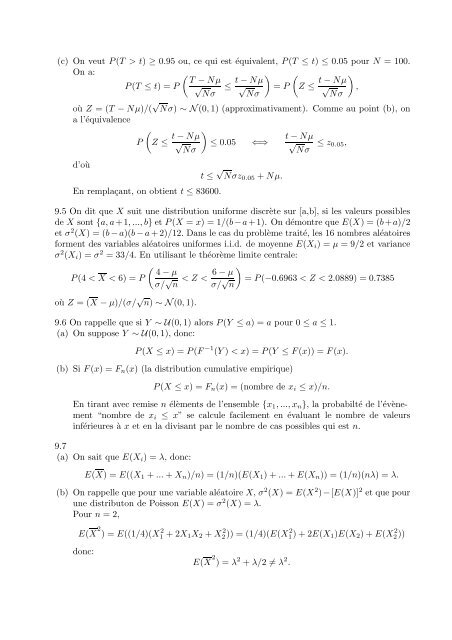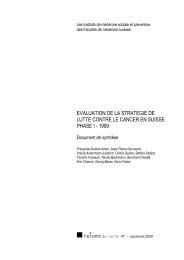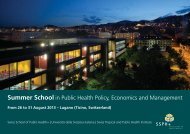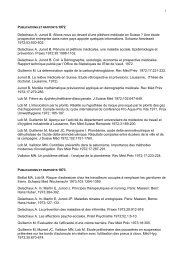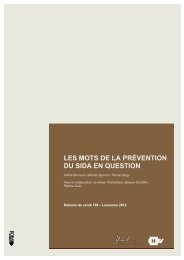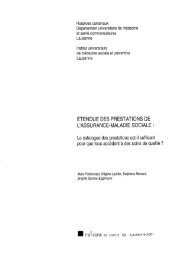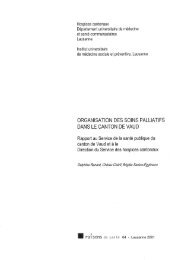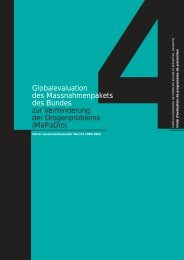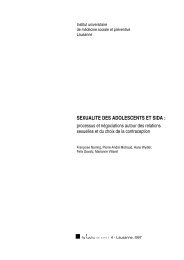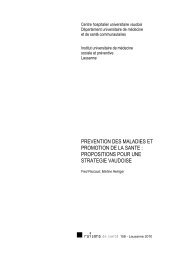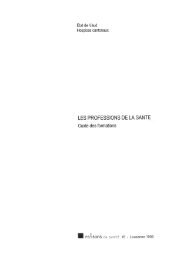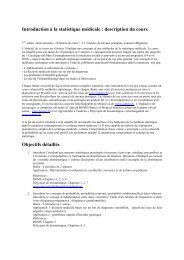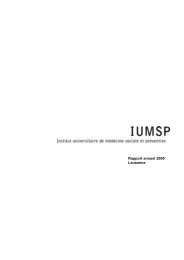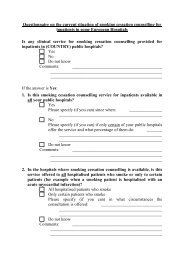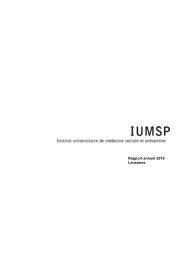Create successful ePaper yourself
Turn your PDF publications into a flip-book with our unique Google optimized e-Paper software.
(c) On veut P (T >t) ≥ 0.95 ou, ce qui est équivalent, P (T ≤ t) ≤ 0.05 pour N = 100.<br />
On a:<br />
<br />
<br />
T − Nμ t − Nμ<br />
t − Nμ<br />
P (T ≤ t) =P √ ≤ √ = P Z ≤ √ ,<br />
Nσ Nσ<br />
Nσ<br />
où Z =(T − Nμ)/( √ Nσ) ∼N(0, 1) (approximativament). Comme au point (b), on<br />
al’équivalence<br />
<br />
<br />
t − Nμ<br />
t − Nμ<br />
P Z ≤ √ ≤ 0.05 ⇐⇒ √ ≤ z0.05,<br />
Nσ<br />
Nσ<br />
d’où<br />
t ≤ √ Nσz0.05 + Nμ.<br />
En remplaçant, on obtient t ≤ 83600.<br />
9.5 On dit que X suit une distribution uniforme discrète sur [a,b], si les valeurs possibles<br />
de X sont {a, a+1, ..., b} <strong>et</strong> P (X = x) =1/(b−a+1). On démontre que E(X) =(b+a)/2<br />
<strong>et</strong> σ 2 (X) =(b − a)(b − a +2)/12. Dans le cas du problème traité, les 16 nombres aléatoires<br />
forment des variables aléatoires uniformes i.i.d. de moyenne E(Xi) =μ =9/2 <strong>et</strong>variance<br />
σ 2 (Xi) =σ 2 =33/4. En utilisant le théorème limite centrale:<br />
P (4 < X


